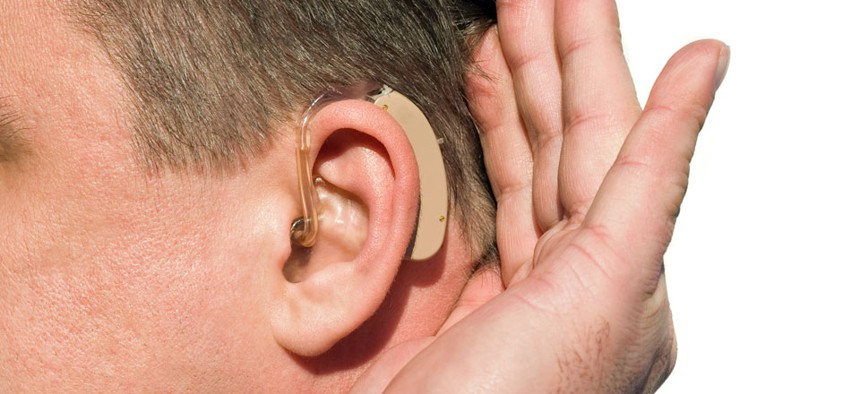When Your Hearing Aid Is an iPhone

andras_csontos/Shutterstock.com
A company is trying to remove the social stigma associated with hearing loss.
The world is loud. As a partial result of this, the typical human aging process involves hearing loss that ranges from mild to severe. And though that loss can be a big problem—"blindness separates people from things," Helen Keller said, while "deafness separates people from people"—it's one that has a solution: Get a hearing aid.
It's a solution that should be both easy and obvious. At this point, hearing aids are relatively advanced; digital technology means that the devices have gotten very good at filtering out background noise, minimizing feedback, and emphasizing human voices in noisy environments. The little machines have become adept, as one audiologist puts it, at making "soft sounds audible, average sounds average, and loud sounds okay to hear."
The main problem with hearing aids, though, has less to do with technology and more to do with culture: Many people who need the aids don't want to get them. They associate them with age. They associate them with ailment. They associate them with the ailment that comes with age. As a result, in a society that values youth above almost all else, the people who can benefit most from hearing aids are often the ones least likely to take advantage of them.
While hearing aid manufacturers have responded to this by designing devices that are as small as possible and custom-fitted to the ear canal, one company has come up with another solution: a hearing aid that is integrated into smartphones. Starkey Hearing Technologies recently launched Halo, a hearing device that syncs with iPhones and iPads. The technology, the company says, doesn't just amplify hearing; it also allows users to listen to music, sync movies, receive phone calls, and chat over Facetime. It allows for geotagging according to specific places—so, for example, it calibrates itself to the volume of a user's favorite restaurant or coffee shop. It joins devices across wireless networks. It's a medical-tech answer, basically, to the broad aspiration of the connected home.
But what might be most significant about the connected hearing aid is not the simple fact that it's connected, but the fact, instead, of what it's connected to. iPhones, still, are considered to be cool. So are iPads. They signify wealth and youth and of-the-moment-ness—and when they're synced with hearing aids, they change what hearing aids themselves signify. This is not a small thing: Nobody, older people included, wants to feel old. There's a market in medical tech not just for tech itself, but for tech that also makes a cultural statement. Halo acknowledges this, implicitly. It tries to take something normally associated with frailty and reclaim it—with the help of devices that, on top of everything else, transcend age and generation.
(Image via andras_csontos/Shutterstock.com)
NEXT STORY: DHS Wants to Recycle Its Own Computers





